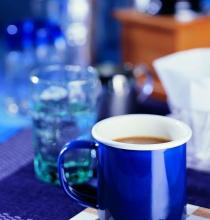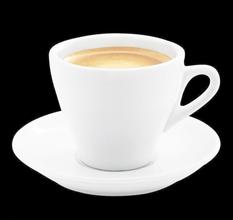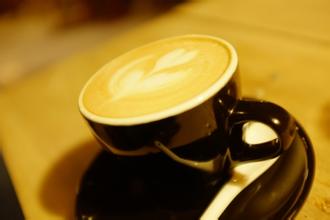ratio of ground coffee to water ratio of coffee
Coffee brewing method
French press French pressure
Percolator mocha pot
Drip Filter trickle filtration
Syphon plug siphon
Pressurised Infusion (Espresso) Italian concentration
As for the grinding thickness of coffee powder:
French pressure: each coffee is ground into 100,300 coffee powders, about 0.7mm powder in diameter, that is, about the size of No. 2 granulated sugar.
Filter: each coffee is ground into 500,800 coffee powder, about diameter 0.5mm powder, that is, about the size of coffee with sugar particles.
Saifeng: each coffee is ground into 1000 to 3000 coffee powders, about 0.35mm powder in diameter, that is, about the size of food refined salt particles.
Espresson: each coffee is ground into 3500 coffee powders, about the diameter of 0.05mm powder, that is, about the size of flour particles.
SCAA standard cup timing coffee powder grinding, 70: 75% through the standard sieve # 20 (0.85mm) uniformity, about a little thicker than the French press.
In addition, SCAE provides the concept of coffee brewing process and brewing time of different grinding thickness:
1. Wetting: at this time, put hot water into the coffee powder to wet the coffee, let the coffee extract dissolve, the amount of water infiltration is about twice the amount of coffee powder, and the infiltration time is about 30sce.
two。 Brewing stage Water Cycle: at this time, because the coffee powder thickness has different time to let the water contact with the coffee powder, and dissolve the coffee extract.
a. French pressing: the powder is coarse, about infiltrating 3~5min
b. Dripping follicle type: the cooking process is about 1~3min
C.Syphon: the cooking process is about 40~60sec
D.espresso: extraction of 30cc espresso in 30 seconds
3. The latter part of the extraction: at this time, the coffee has extracted more than 50% of the extractable matter, that is, 60% to 70% of the coffee soluble extract is extracted for the most suitable extraction and adjust the amount of water to reach the optimum coffee concentration between 1.0% and 1.5%.
4. Coffee grounds after extraction: the water content in the coffee grounds is about 2 times that of the original coffee powder (hand-brewed type).
Weight reference of some coffee pounds
1. Coffee beans: about 60.7 for 1g
2.Hario Syphon measuring spoon: a flat spoon 8x 9g
3.Hario V60 measuring spoon: one flat spoon 14015g
4. Coffee beans (after roasting): 0.38, 0.43 g / cm ^ 3
5. Coffee powder: 0.44, 0.48 g / cm ^ 3
6. A coffee bean with long axis 12mm, short axis 8mm and high 5mm semi-ellipsoid is roasted. It is said that the coffee extraction is related to the surface area. The surface area of the above coffee is 1.4cm ^ 2.
ExtractMOJO issued by TDS and George Howell Coffee company.
ExtractMojo is not a new concept. He just continues the Gold Cup principle of SCAE and makes the theory and practice more convenient. For many people, this set of Gold Cup theory, which was used to examine the quality of follicle coffee in the 1960s, is no stranger. But I must admit that this is the first time that I have seriously understood the principle and brought out the extraction theory again.
Coffee under the Gold Cup framework must maintain an extraction rate of 180.22% (Extraction) and a concentration of about 1.3% TDS (Strength). This is a relationship between the extraction rate and concentration that enables coffee to balance the interpretation of flavor. A coffee bean has about 30% of the soluble substance (the remaining 70% is an insoluble structure, including xylem); the standard extraction rate of Gold Cup is set at 20%; if it is too low, it is due to underextraction (under developed), which leads to flavor imbalance; if it is too high, it is bitterness caused by excessive extraction (Bitter). Strength means that the same soluble substance in the coffee is washed out as a percentage of the coffee solution. The higher the percentage, the stronger the coffee (strong) and vice versa (weak). After understanding these two nouns, we have to try to make coffee to the goal of Extraction=20% and TDS=1.3%.
To achieve this goal of Extraction=20% and TDS=1.3%, Gold Cup has a recommended water-powder ratio, which is about water: coffee= 17:1. The convenience of ExtractMOJO is that you can fix the amount of powder (ground coffee), the amount of water used for cooking (brew water), or the capacity after the cup (desired yield), one of the three parameters, to calculate how much the remaining two should be. For example, if you are going to brew a cup of coffee with a full cup capacity of 240cc today, after you fill in the number in this field, ExtractMOJO will advise you to use 271.69ml 's water with 15.19g of coffee powder (the software will estimate the average water absorption of coffee powder). First fix the water temperature (suppose 205F), take the TDS value of the cup of coffee after brewing, and then input the software to get the landing point of brewing coffee, and then correct it. If the TDS is too high, you can thicken the powder or shorten the extraction time, and vice versa. Follow the data a few more times and you will soon be able to catch your Gold Cup cooking parameters.
Of course, if you want coffee strong (stronger) or light (weaker), you can also adjust the setting. After adjustment, the cooking parameters will run along with it. This is where ExtractMOJO is convenient. You don't need a computer to do the math, just throw the data in, follow the operation, and then correct it according to the actual TDS value. In principle, Extraction=18~22%, TDS=1.3~1.6% is an acceptable range.
Through the experiment, it is found that the brewing of Clover, due to the deviation of the previous concept, uses too much powder, which leads to the increase of TDS to improve the coffee intensity, but ignores the performance of the extraction rate, and makes the coffee fall in the underdeveloped and rich (Strong/Underdeveloped; TDS=1.7,Extraction=11%) range. This cooking method, in addition to a waste of coffee powder, resulting in insufficient extraction rate, but makes the flavor of the producing area is not obvious. It is urgent to use the recommended amount of powder to find new grinding, extraction time, and filter mesh. If business capacity is taken into account, I can't use the four minutes recommended by Gold Cup to make coffee, so I have to fine-tune the grinding to shorten the brewing time. In addition, the coarse filter (70 micorn) is more suitable for cooking Gold Cup than the fine filter (100micorn).

Important Notice :
前街咖啡 FrontStreet Coffee has moved to new addredd:
FrontStreet Coffee Address: 315,Donghua East Road,GuangZhou
Tel:020 38364473
- Prev

Why do you pour milk? Why do you pour milk?
In some places, thermometer is used to measure. I think this teaching method is not good. Technology is something that needs people's heart to understand. It is not very beneficial to improve people's own technology with the help of external forces. The fourth step is to recognize a dead angle between a milk frothing cylinder and a coffee machine steam pipe. Read a lot of domestic and foreign barista operation to make milk foam, coupled with their own constant attempts, found to make milk foam
- Next

Coffee machine has water, there is coffee powder, why not coffee Delon coffee machine coffee powder
The water must be cold water or warm water. @ DimLau said in the answer that adding 90 degrees of hot water is problematic. I tried to extract it with hot water heated by the water cooler, and it tasted terrible, bitter and astringent. In particular, that kind of acerbity is obviously a feeling of over-extraction. Be sure to use filter paper. Although the machine has its own filter, the effect of this filter is difficult to guarantee.
Related
- Beginners will see the "Coffee pull flower" guide!
- What is the difference between ice blog purified milk and ordinary milk coffee?
- Why is the Philippines the largest producer of crops in Liberia?
- For coffee extraction, should the fine powder be retained?
- How does extracted espresso fill pressed powder? How much strength does it take to press the powder?
- How to make jasmine cold extract coffee? Is the jasmine + latte good?
- Will this little toy really make the coffee taste better? How does Lily Drip affect coffee extraction?
- Will the action of slapping the filter cup also affect coffee extraction?
- What's the difference between powder-to-water ratio and powder-to-liquid ratio?
- What is the Ethiopian local species? What does it have to do with Heirloom native species?

